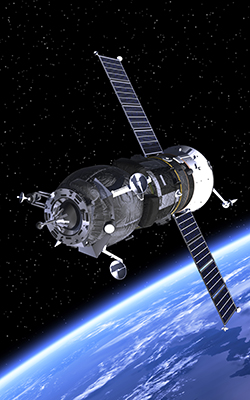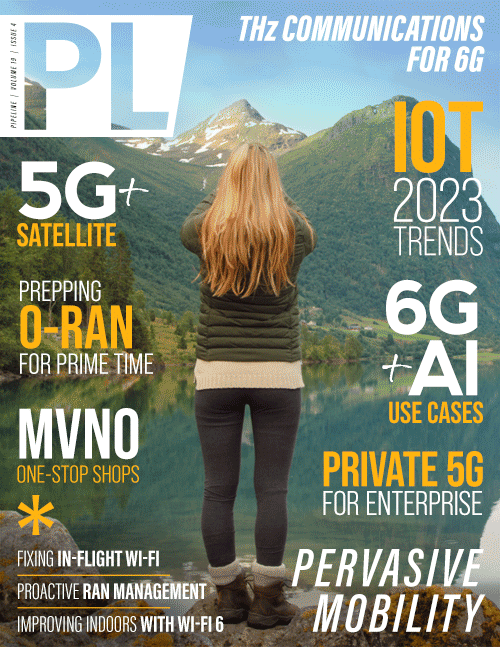Enabling 5G Mobility with Satellite Connectivity
By: Mark Rasmussen
 As the rollout of 5G coverage accelerates to include much of the world’s inhabited areas, mobile network operators (MNOs) rely on satellite connectivity to support the development and deployment of
the technology. As the next generation of satellite networks takes hold, the advantages of satellite will be even more profound—namely in the ubiquity, resiliency, and mobility of these networks.
As the rollout of 5G coverage accelerates to include much of the world’s inhabited areas, mobile network operators (MNOs) rely on satellite connectivity to support the development and deployment of
the technology. As the next generation of satellite networks takes hold, the advantages of satellite will be even more profound—namely in the ubiquity, resiliency, and mobility of these networks.
More specifically, geostationary earth orbit (GEO) satellites cover large geographic areas from a fixed point approximately 36,000 km above the equator, synchronized with the earth's orbit. GEO platforms cover one area predictably and efficiently, allowing for overlapping areas of coverage to create a network for uninterrupted connectivity. A small network of satellites can, as a result, cover most (or all) of the Earth’s inhabited surface (a much more cost-effective solution than terrestrial networks) and provide the ubiquitous coverage necessary for 5G rollout.
Cybersecurity for satellite networks
Space-based systems are the ideal solution for mobile connectivity. Vehicles like ships, planes, and trains are all beneficiaries of the seamless coverage provided, and the advantages only grow within the evolving 5G world.
Intelsat recognizes the importance of a secure network that customers can trust throughout all phases of data transmission, from teleports on the ground to satellites in the sky. In the network industry, the inherent risk of connecting the world is not lost on us.
Last February, an attack on European ground infrastructure left tens of thousands of people without Internet for more than a month. More critically, the cyberattack plunged some of Ukraine’s defense communication systems into darkness as Russian forces began their invasion of the country.
Following the attack, the European Union released a joint statement attributing the attack to Russia. Later, a team of researchers determined that the attack was likely caused by a new Russian malware strain known as “AcidRain.”
We believe that it is all operators’ responsibility to ensure such an attack on any part of their network can never succeed. More than ever, cybersecurity must be built to the highest standard.
Cybersecurity is too complex and disruptive to rely solely on internal security reviews, as even the best internal cybersecurity professionals can miss threats that another team can identify. The Service Organization Control 3 (SOC 3) cybersecurity accreditation, certified by an independent auditor, provides unparalleled protection of sensitive communications, keeping customers safe from unauthorized access or jamming. This enables operators to enforce the highest standards of network security laid out by the National Institute of Standards and Technology (NIST).
Also, this new elevated threat level requires a multilayered approach across the entire satellite ecosystem. Simply securing the satellite isn’t enough. As the attack in February exemplifies, all parts of the network, including the ground infrastructure that sends and receives data to and from satellites, are equally critical in creating a safe and secure network.
Creating a safe and secure satellite network
First, an information security program is needed to ensure prevention and restoration throughout the satellite, ground, and network infrastructure to enhance resilience and mission assurance. This program should be centrally managed by the information security team, which holistically reviews information security to ensure confidentiality, integrity, and availability throughout the entire operating environment.
Securing the ground network, which is the framework by which data is transmitted from customers to the satellite, to International Organization for Standardization (ISO) 27001/27002 standards—among the world's best-known standards for information security management systems—is the assurance of a strict risk management policy put in place to control and address any potential risk.
The 24/7 monitoring operated by teleport activity requires a fully redundant infrastructure. In the event of outages, whether planned or unplanned, at least three paths to most points of presence
on the network should be maintained. As data is transmitted to the satellite, Transmission Security (TRANSEC) guidelines outlined by



















